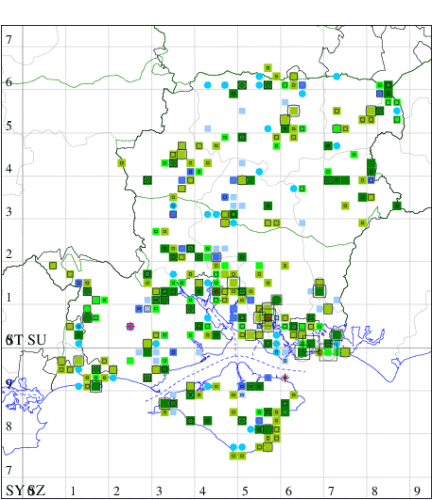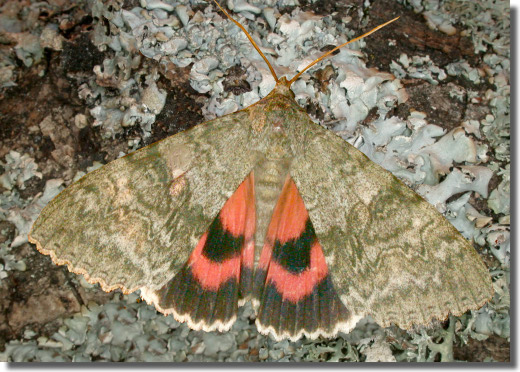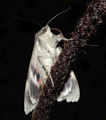Red Underwing
Catocala nupta
Checklist Number72.078 [B&F: 2452]
Verification
Record will be accepted (subject to date and location checks)
Common in woodland, parks, scrub, marshes and gardens throughout much of England and Wales. In Hampshire and on the Isle of Wight The most widely distributed of the Catocala group, but less so than formerly. Not particularly attracted to light, which may result in it being under-recorded, but it isn't seen by day resting on tree-trunks in the profusion of a few decades back. Wingspan 75-94 mm. The most likely confusion species are the very much less common Light Crimson Underwing C. promissa and Dark Crimson Underwing C. sponsa, in both of which the subterminal line is strongly dentate, and Rosy Underwing C. electa, in which the forewing is uniformly pale grey, without ochreous tint, the reniform stigma less clearly defined and the postmedian line more strongly dentate subcostally, with a costally directed tooth (MBGBI Vol 10). Larva feeds on Black Poplar, White Poplar, Aspen, Crack Willow and White Willow, over-wintering as an egg.


The abundance in each month is indicated as follows:
 No records
No records Very occasional
Very occasional Irregular
Irregular Uncommon
Uncommon Off-peak, but not unusual
Off-peak, but not unusual Off-peak, but not unusual
Off-peak, but not unusual Main flight time
Main flight time| J | F | M | A | M | J | J | A | S | O | N | D | |
|---|---|---|---|---|---|---|---|---|---|---|---|---|
| Adult |  |  |  |  |  |  |  |  |  |  |  |  |
| Larval |  |  |  |  |  |  |  |  |  |  |  |  |




